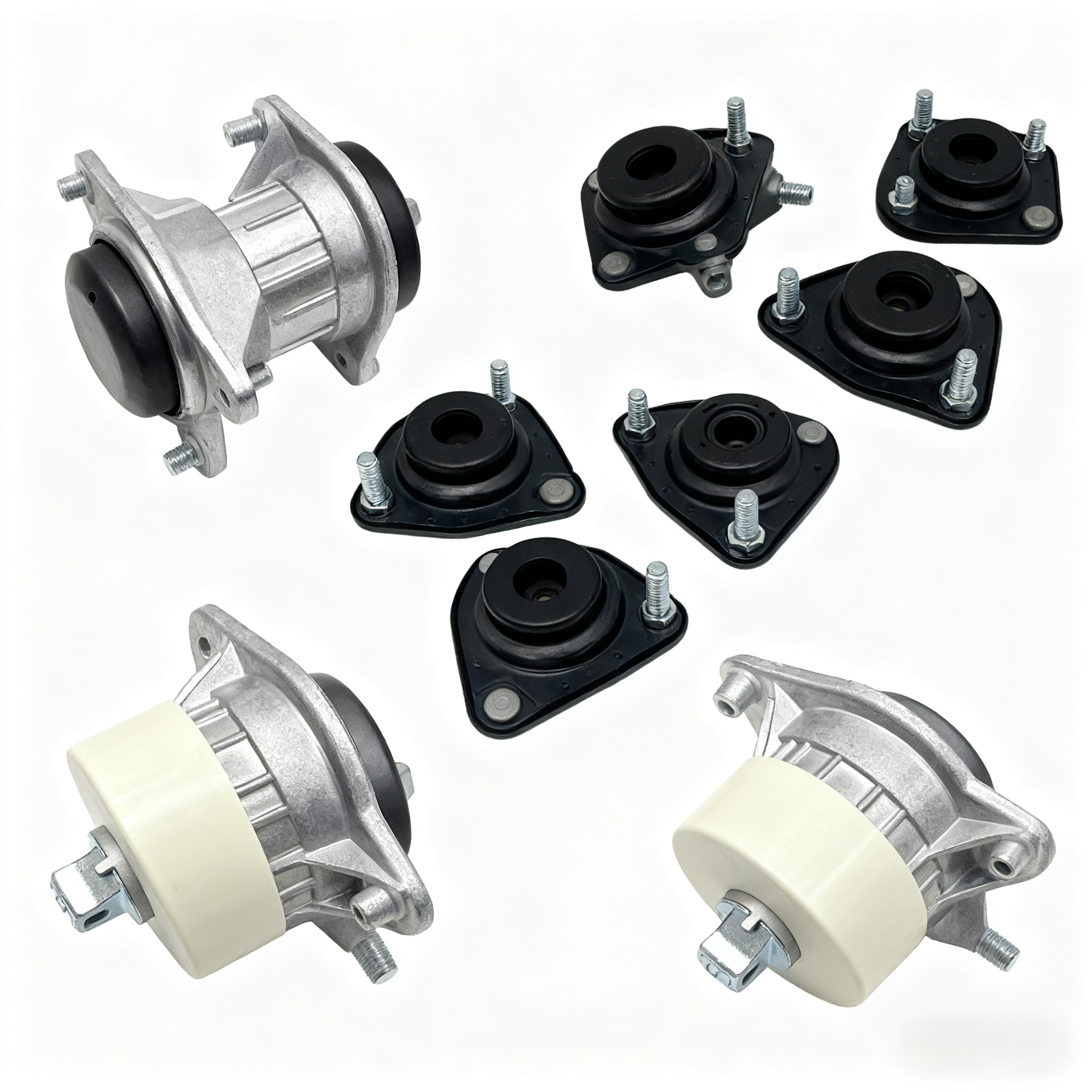- All
- Product Name
- Product Keyword
- Product Model
- Product Summary
- Product Description
- Multi Field Search
Views: 200 Author: Site Editor Publish Time: 2025-09-11 Origin: Site

How Engine Mounts Work: Your Vehicle's Silent Guardian
Engine mounts (or motor mounts) are key parts connecting the engine to the vehicle’s chassis. They act as a buffer—cutting vibrations, securing the engine, and boosting driving comfort.
First, they dampen vibrations and block noise. Engines create high-frequency vibrations when running; the rubber or hydraulic fluid in mounts works like a shock absorber, soaking up these vibrations to stop them reaching the chassis. This quiets the cabin and makes rides smoother.
Second, they hold the engine firmly. The heavy engine generates strong forces during operation. Mounts use rigid brackets plus flexible materials to anchor it to the frame, preventing excessive movement from vibrations or road impacts and avoiding collisions with nearby parts.
Third, they adapt to movement and protect components. When the engine heats up, it expands and contracts; mounts’ flexible design allows slight movement to fit this. They also reduce rigid pulling between the engine and transmission, protecting parts like drive shafts and fluid lines to extend their life.
Finally, they ensure stable power delivery. A steady engine is vital for smooth power transfer. Mounts minimize unnecessary movement, keeping the engine, transmission, and drivetrain aligned—reducing power loss and maintaining performance.
Worn mounts (from cracked rubber or fluid leaks) cause more cabin vibration, loud idling, or rough shifting. Inspect and replace them promptly to protect your engine.
Room 601, Baiyun Jinzhong Building, Baiyun District, Guangzhou City, China
+86-19700202258
+86 020 36609969
sida19700202258@163.com